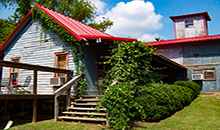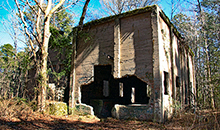Main Menu
Tyler County Data
Tyler County Communities & Places
Genealogy & History Links by USGHN
Important Tyler County Addresses
Sponsors
Tyler County Neighbors
Angelina County, Texas Genealogy & History Network
Hardin County, Texas
Jasper County, Texas
Polk County, Texas
Other Websites
Welcome to Tyler County Texas Genealogy & History Network!
Welcome to the Tyler County, Texas Genealogy & History Network. Our purpose is to provide visitors with free resources for genealogical and historical research. To share your genealogy or history information, send an email to txghn@outlook.com and we will happily include it here. For other Texas Counties, visit the Texas Genealogy & History Network state website and go to the appropriate county. Thanks for visiting and good luck with your research! |
|
About Tyler County, Texas...

Tyler County is in southeastern Texas near the Louisiana border. Woodville, the county seat and largest town, is fifty-six miles north of Beaumont and ninety miles northeast of Houston. The county lies in the East Texas timberlands, an area densely forested with pine and a great variety of hardwoods. The land is gently rolling, with an elevation ranging from 100 to 400 feet above sea level.
The area of Tyler County was for centuries occupied by agricultural Caddoan, and possibly Atakapan, Indians. White settlers there in the early nineteenth century encountered both Caddoan-related Cherokees uprooted from the east and groups of Alabama and Coushatta Indians, recent migrants from Louisiana. In 1809 there were hundreds of Alabama Indians living on the west bank of the Neches River. At Peach Tree Village in Tyler County, their principal Texas settlement, the Alabamas kept cattle, horses, and hogs and cultivated corn, potatoes, beans, and yams. The Cherokees were eventually driven from the state by order of Mirabeau B. Lamar, but the Alabamas and Coushattas cooperated with Sam Houston and others friendly to their cause and have survived as one of only two  Indian groups living on their own reservations in Texas. The Alabama-Coushatta Reservation is just across the western Tyler County line in Polk County.
Indian groups living on their own reservations in Texas. The Alabama-Coushatta Reservation is just across the western Tyler County line in Polk County.
The settlement by whites of what was to become Tyler County began before the time of the Texas Revolution in 1836. Three Americans received land grants there from Mexican authorities in 1834, and thirty-four more men and one woman, Jane Taylor, received grants during 1835. The area was originally organized in 1842 under the name of Menard District. Tyler County was officially established by the Texas legislature on April 3, 1846, and was named in honor of President John Tyler. In 1842 Town Bluff, one of two early settlements, became the temporary county seat. In 1845 a permanent location was chosen. This was the site of the present county seat, Woodville, on 200 acres of land donated by Dr. Josiah Wheat. Woodville was named in honor of George T. Wood, who introduced the bill to establish the county and was the second governor of the state of Texas.
Tyler County was settled predominantly by people from the southern United States, many of whom planned to resume the slaveholding society they had known before moving to Texas. However, the forests and loamy sand were not suited to growing cotton, so many of those who actually stayed were poor white  farmers who owned no slaves. Tyler County before the Civil War had a subsistence productivity, home-consumed, mainly corn, sweet potatoes, molasses, and home-slaughtered animals.
farmers who owned no slaves. Tyler County before the Civil War had a subsistence productivity, home-consumed, mainly corn, sweet potatoes, molasses, and home-slaughtered animals.
In 1861, 99 percent of the citizens supported secession. The area was not invaded during the Civil War, but hundreds of its men fought, and most of its families felt in some way the pains of the war. During Reconstruction federal troops were stationed in Woodville for a time in 1868.
Tyler County remained overwhelmingly agricultural and rural through 1900. But the economic picture shifted for the better with the coming of the railroads in the 1880s, because they facilitated the exploitation of its vast timber resources. Main lines and many smaller connecting and short-line spurs were subsequently built to accommodate loading and hauling of timber. The foundation was laid for the sale of timberlands and timber and wood-related industries. By 1890 there were nineteen sawmills operating in Tyler County. The lumber industry continued to form the economic backbone of Tyler County through the  first half of the twentieth century.
first half of the twentieth century.
The Great Depression, however, hit the county hard. Between 1930 and 1940 the number of people in both agricultural and nonagricultural occupations declined sharply, and unemployment remained high. Timber sales remained the number one producer of income. In the 1980s Tyler County was second only to Polk County in timber production, followed by farming, lumbering, poultry processing, manufacturing, tourism, and catfish production. Oil and gas production started in 1937 and experienced a limited increase during the 1970s and early 1980s. By 1990 a total of 33,618,537 barrels of oil had been produced in the county.
In 1985 Tyler County had two weekly newspapers, the Woodsman and the Tyler County Booster, both published at Woodville. Religious life, as in much of East Texas, has been dominated since the county's beginnings by evangelical Protestantism, especially by the Baptist, Primitive Baptist, and Methodist denominations. Tyler County has a reputation for rural harmony, quiet, and beauty that particularly encourages family tourism.
 The county has a total area of 936 square miles, of which 925 square miles is land and 11 square miles (1.2%) is water. The population recorded in the 1850 Federal Census was 1,894. The 2010 census recorded 21,766 residents in the county.
The county has a total area of 936 square miles, of which 925 square miles is land and 11 square miles (1.2%) is water. The population recorded in the 1850 Federal Census was 1,894. The 2010 census recorded 21,766 residents in the county.
Neighboring counties are Angelina County (north), Jasper County (east), Hardin County (south), and Polk County (west). The county seat is Woodville. Other communities in the county include Colmesneil, Ivanhoe, Chester, Warren, Wildwood, Doucette, Fred, Hillister, Ivanhoe North, Spurger, Maydell, Mobile, Seneca, Barnum, Camden, Hampton, Josie, and Hyatt.
Tyler County, Texas Records
Birth Records - The Texas Department of State Health Services has records from 1903 to present. Records for the last 75 years considered private and will only be provided to certain individuals. To obtain current information on who may obtain a record, how to submit a request and an official request form, see the Texas Department of State Health Services website or write to Texas Vital Records, Department of State Health Services, P.O. Box 12040, Austin, TX 78711-2040.
For older birth records you will have to write to the County Clerk of the applicable county. The existence of birth records prior to 1903 will vary widely from county to county. Local historical societies and genealogy collections in local libraries may be able to provide some information.
Death Records - The Texas Department of State Health Services has records from 1903 to present. Records for the last 25 years considered private and will only be provided to certain individuals. To obtain current information on who may obtain a record, how to submit a request and an official request form, see the Texas Department of State Health Services website or write to Texas Vital Records, Department of State Health Services, P.O. Box 12040, Austin, TX 78711-2040.
Marriage Records - The Texas Department of State Health Services can provide a verification letter of marriage for Texas marriages from 1966 to present. This is NOT a marriage license. To obtain a certified copy of a marriage license you must contact the County or District Clerk in the county or district where the marriage took place.
Local historical societies and genealogy collections in local libraries may be able to provide some information.
Divorce Records - The Texas Department of State Health Services can provide a verification letter of divorce for Texas divorces from 1968 to present. This is NOT a copy of the divorce decree. To obtain a certified copy of a copy of the divorce decree you must contact the County or District Clerk in the county or district where the divorce took place.
Local historical societies and genealogy collections in local libraries may be able to provide some information.




